With all the recent controversy surrounding plug-in hybrids, from the accusation that they are an "environmental disaster", to the controversial proposal by the PAN for OE 2021 to withdraw their tax benefits, aboard the Citroën C5 Aircross Hybrid everything remains serene, as if it were nothing to him.
Sereno is even the best adjective that defines not only Citroën's first plug-in hybrid, but the C5 Aircross itself. Something we've seen on several occasions, since we first met him in Morocco, in 2018; and this year on national soil at the controls of the 1.5 BlueHDI; and, even more recently, during the dynamic presentation (on video) in Spain of this unprecedented Hybrid.
Now at the controls of the C5 Aircross Hybrid for several days on national soil, he was able to get to know all the vices and virtues of this proposal and also remove doubts about the controversial topic of consumption/emissions of plug-in hybrids.
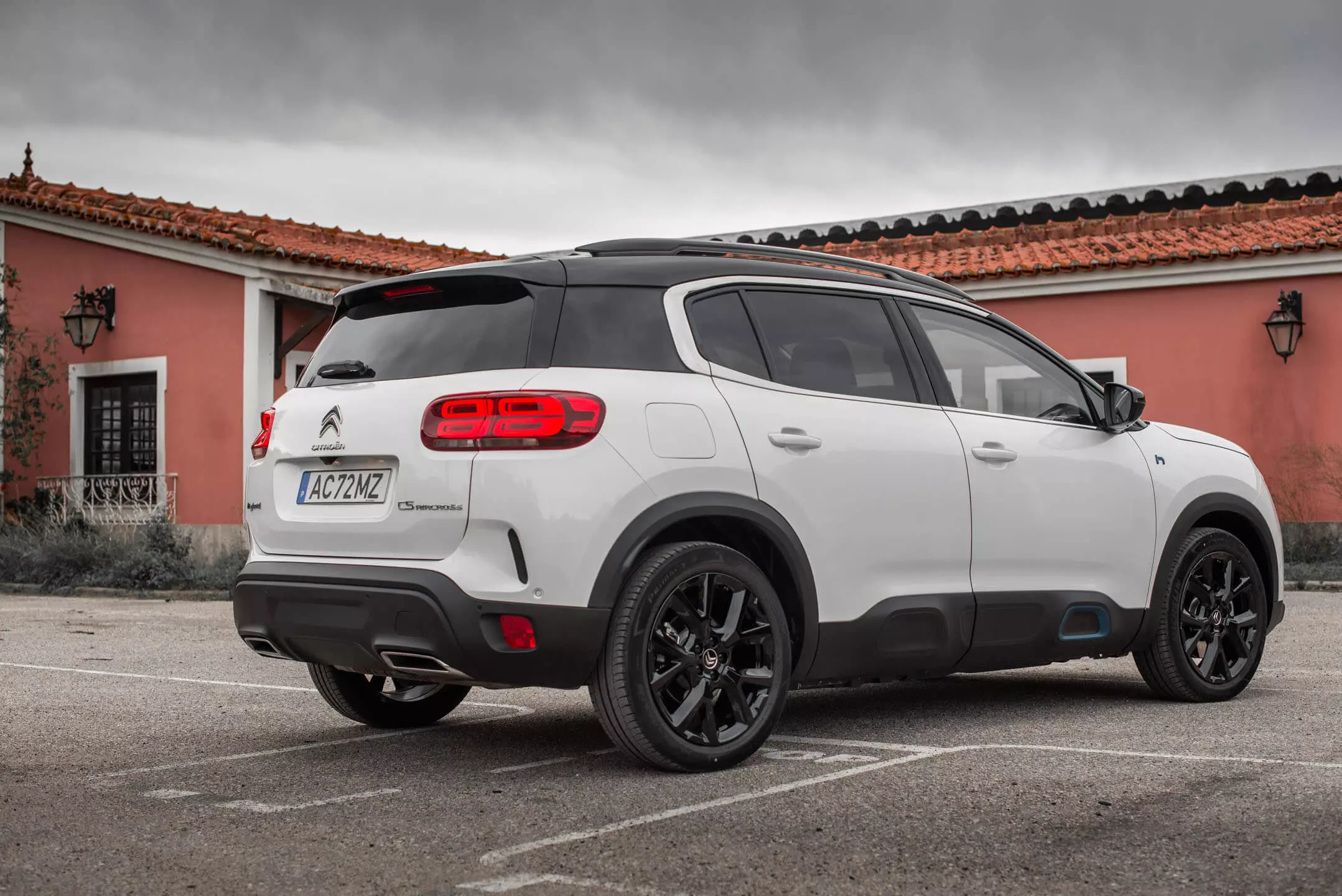
1.4 l/100 km are possible?
However, if you've read and/or seen our tests of other plug-in hybrids, you'll find a constant: the consumptions we get are always higher than the official combined values — two, three, or even four times more — and it's not difficult see why. In the certification tests (WLTP) of consumption and emissions of plug-in hybrids, the battery that equips them is at its maximum charge level, so naturally, the electric motor is the only one used during a substantial part of that same test.
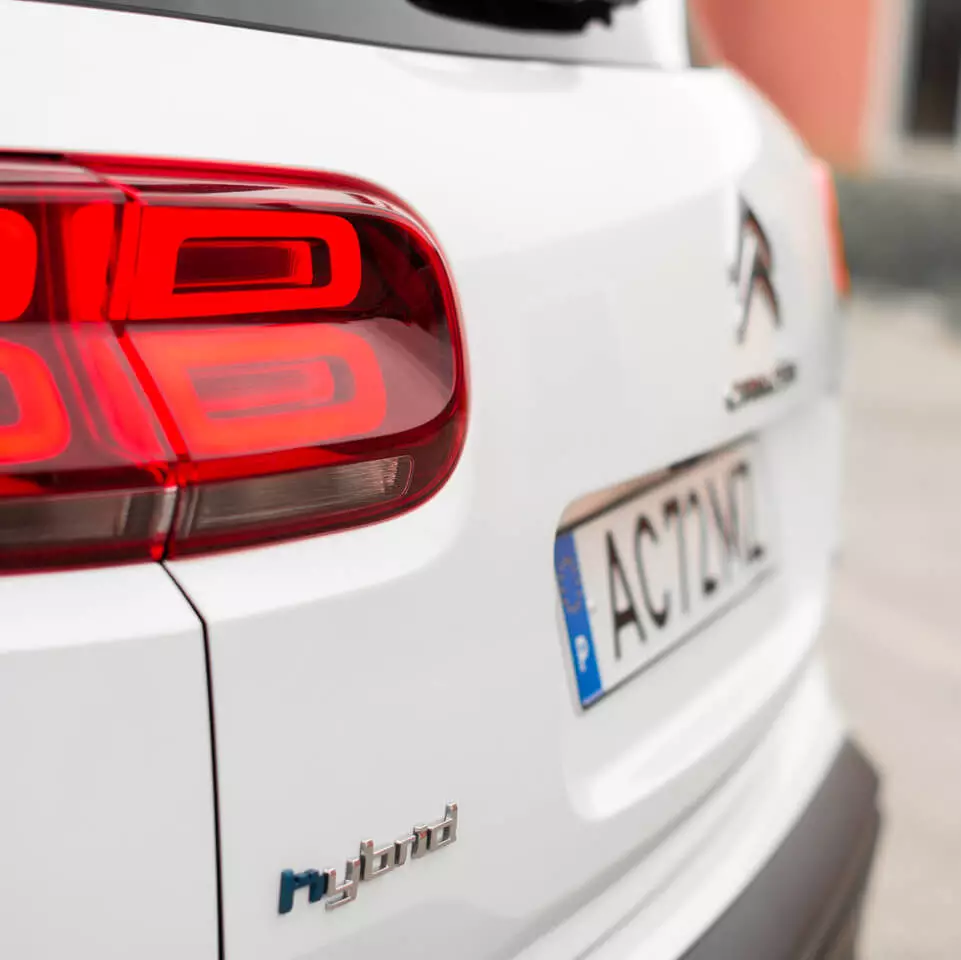
In addition to the charging port, to distinguish the C5 Aircross Hybrid from other C5 Aircross you have to look at the emblem on the rear…
No wonder, therefore, that the vast majority of plug-in hybrids advertise combined fuel consumption figures below 2.0 l/100 km and CO2 emissions below 50 g/km — the C5 Aircross Hybrid advertises just 1.4 l/ 100 km and 32 g/km and an electric range of 55 km. In the more chaotic real world, far from the rigors of laboratory testing, where it is not always possible to charge the (small) battery as often as it requires, the combustion engine is called upon to intervene much more often.
The same is true for the C5 Aircross Hybrid tested here. Yes, it is possible to reach the official 1.4 l/100 km and even less, if we carry out short distances on a daily basis and have a loader “at hand to sow”. But with the battery without “juice” — with carefree driving, I achieved approximately 45 km of autonomy with zero emissions — consumptions between 6-6.5 l/100 km are not difficult to achieve.
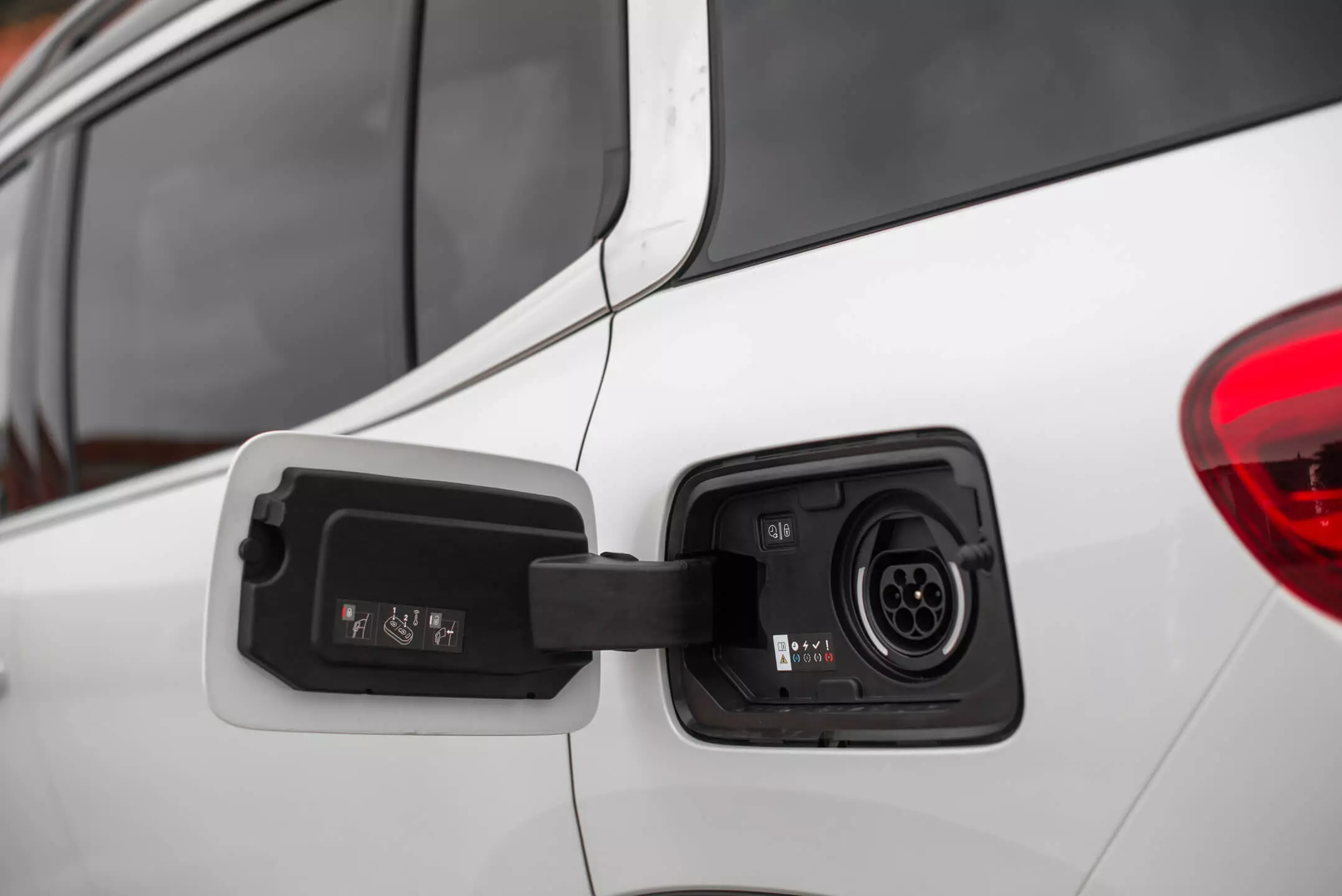
And much more? No doubt. Will it be an “environmental disaster”? Obviously not. These values must be put into perspective.
We are talking about consumptions that are slightly above those obtained by the C5 Aircross 1.5 BlueHDi. But in the Hybrid we have 180 hp extracted from the 1.6 PureTech that go up to 225 hp when we add the electric motor and the Diesel stays at 130 hp — the electrified C5 Aircross is much faster, not only on paper, but also in sensations, courtesy of the electric motor's instantaneous torque, even though it is three hundred pounds heavier.

As we've said for all the other plug-in hybrids we've tested, also this C5 Aircross Hybrid is not for everyone , and whose existence only makes sense when it is loaded frequently.
mild, maybe too much
But if you opt for the Citroën C5 Aircross Hybrid, you will discover a very comfortable and refined family SUV. Well, the C5 Aircross is quite comfortable whatever the version, but this hybrid variant adds an additional layer of refinement, which is to put it mildly, soundproofing.
Subscribe to our newsletter
What is curious, as the Hybrid is also the most powerful and one of the fastest C5 Aircross. The electric motor's instantaneous torque helps a lot to the perky and much appreciated performance, with the SUV managing to “move” really well. The marriage between the two engines is on a high plane — the heat engine doesn't rush into the picture and the noise levels are very well controlled — and the ë-EAT8 (eight-speed automatic) gear does a pretty good job of managing it all. this.
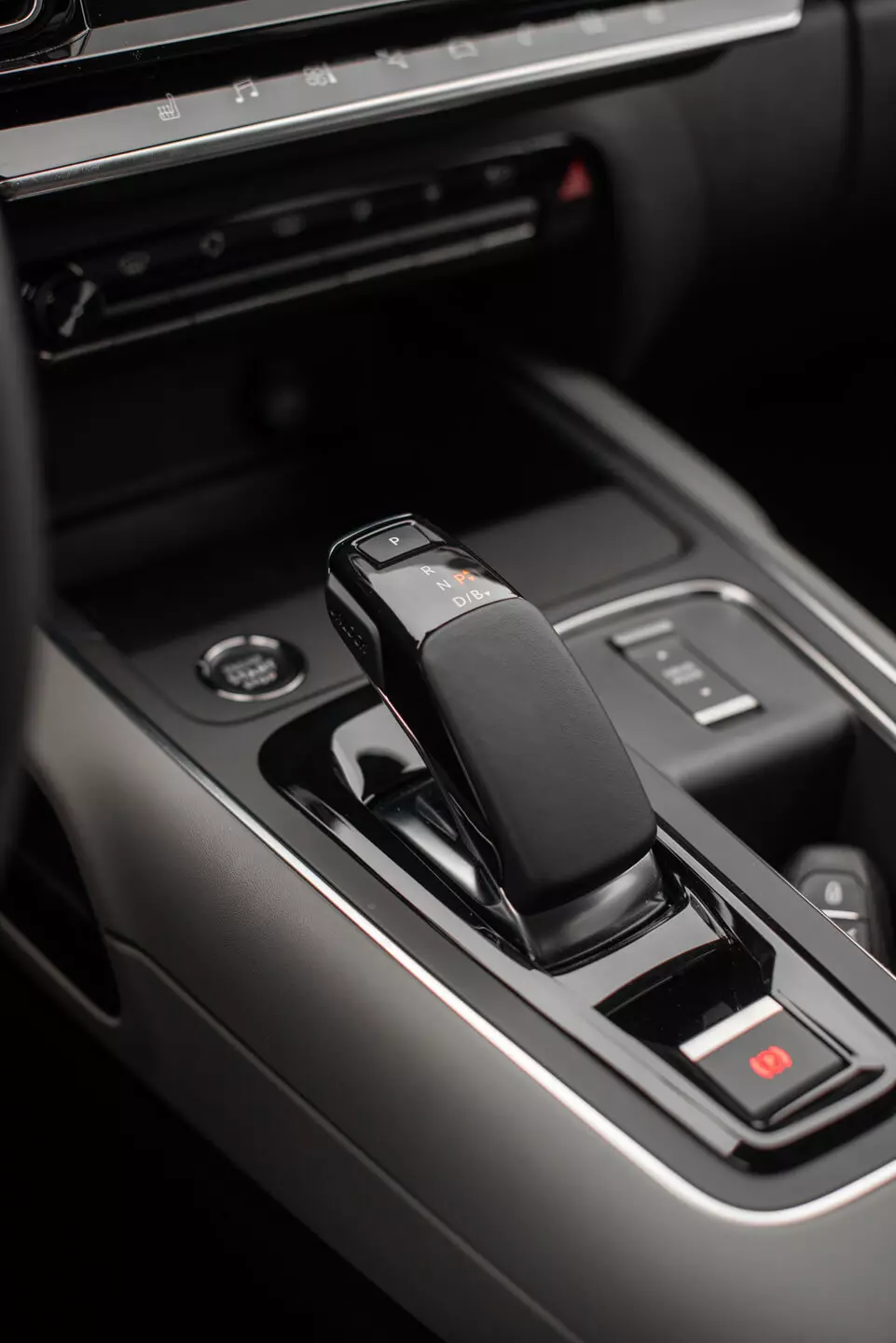
However, the driving experience is something dissonant. On the one hand we have an interesting performance level that invites you to explore it, but on the other hand, everything else in the C5 Aircross Hybrid invites a moderate tempo.
Whether by the assistance of its commands, always high, even when it shouldn't be — the highway steering lacks weight, for example —; whether because of the very soft suspension damping which, when we raise the pace, reveals some limitations in containing bodywork movements; or even by the ë-EAT8, which ends up hesitating in its action when you press with more determination on the accelerator (a characteristic that remains in manual mode).
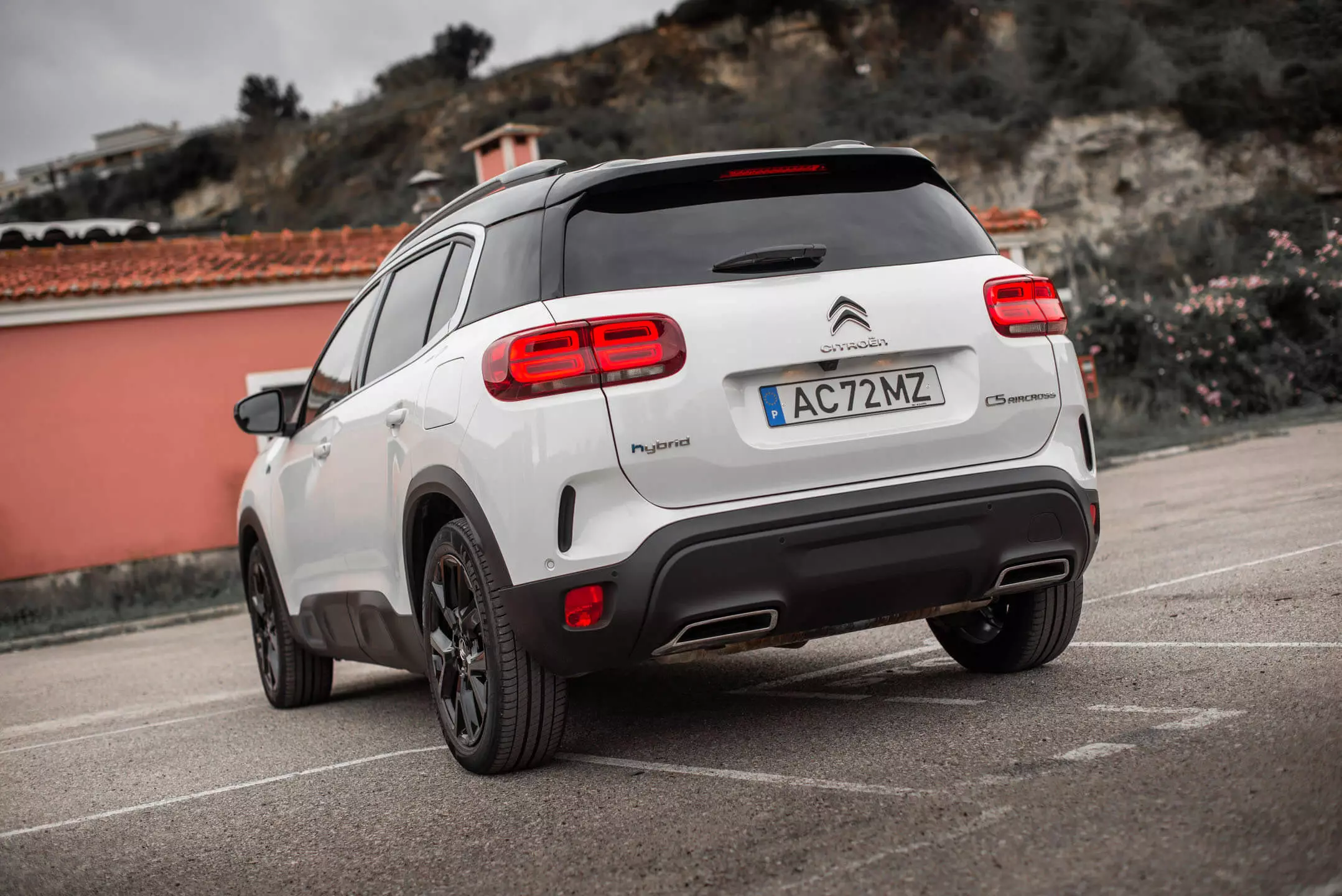
Take a deep breath, moderate your pace and your action on the steering and pedals, and the harmony between the mechanical and dynamic set returns — after all this is a family SUV, not a hot hatch, and if there is a prevalent theme in the C5 Aircross it's comfort. Although a little more weight and a greater sense of connection between conductor and machine would be welcome. Which leads us to ask why there is a Sport mode…
That said, the behavior is safe and harmless. There are no strange reactions and it is always guided by their progressiveness.
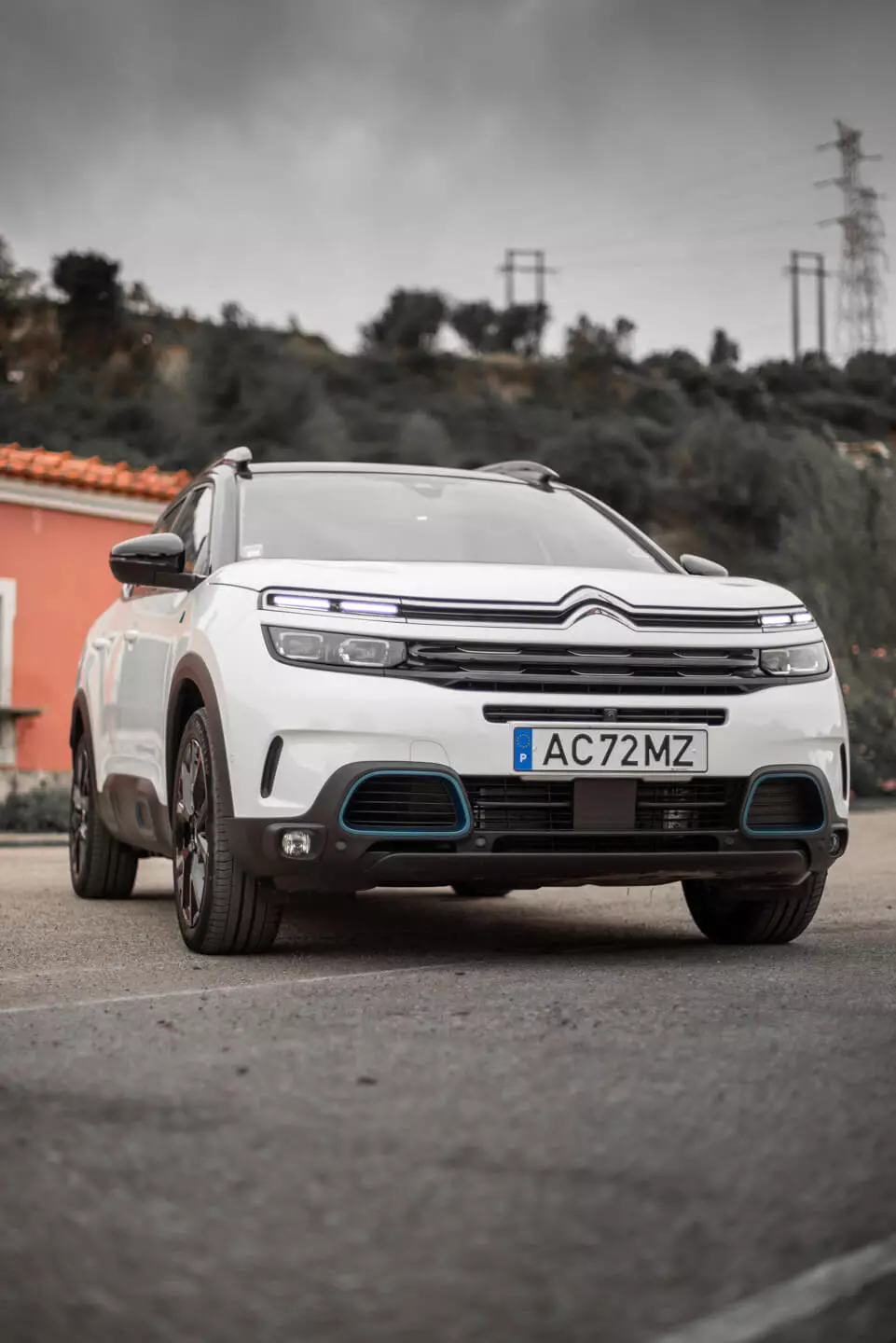
SUV or MPV? Why not both?
For the rest, it is the C5 Aircross that we already know, that is, in addition to being comfortable it is also flexible, reminiscent of the MPV. It is still the only one in the segment to come with three individual and identical rear seats, all of them sliding by 150 mm, with reclining and folding backs. Space is quite reasonable in the second row (fairly good in width), but competitors like the Volkswagen Group — Skoda Karoq, Volkswagen Tiguan, SEAT Ateca — have more legroom and the perception of space on these is also superior.
The Citroën C5 Aircross Hybrid has, however, a disadvantage compared to the other brothers in the range. Batteries placed in the back rob the trunk of space, which goes from a reference 580-720 l (depending on the position of the rear seats) to a more moderate but still significant 460-600 l.
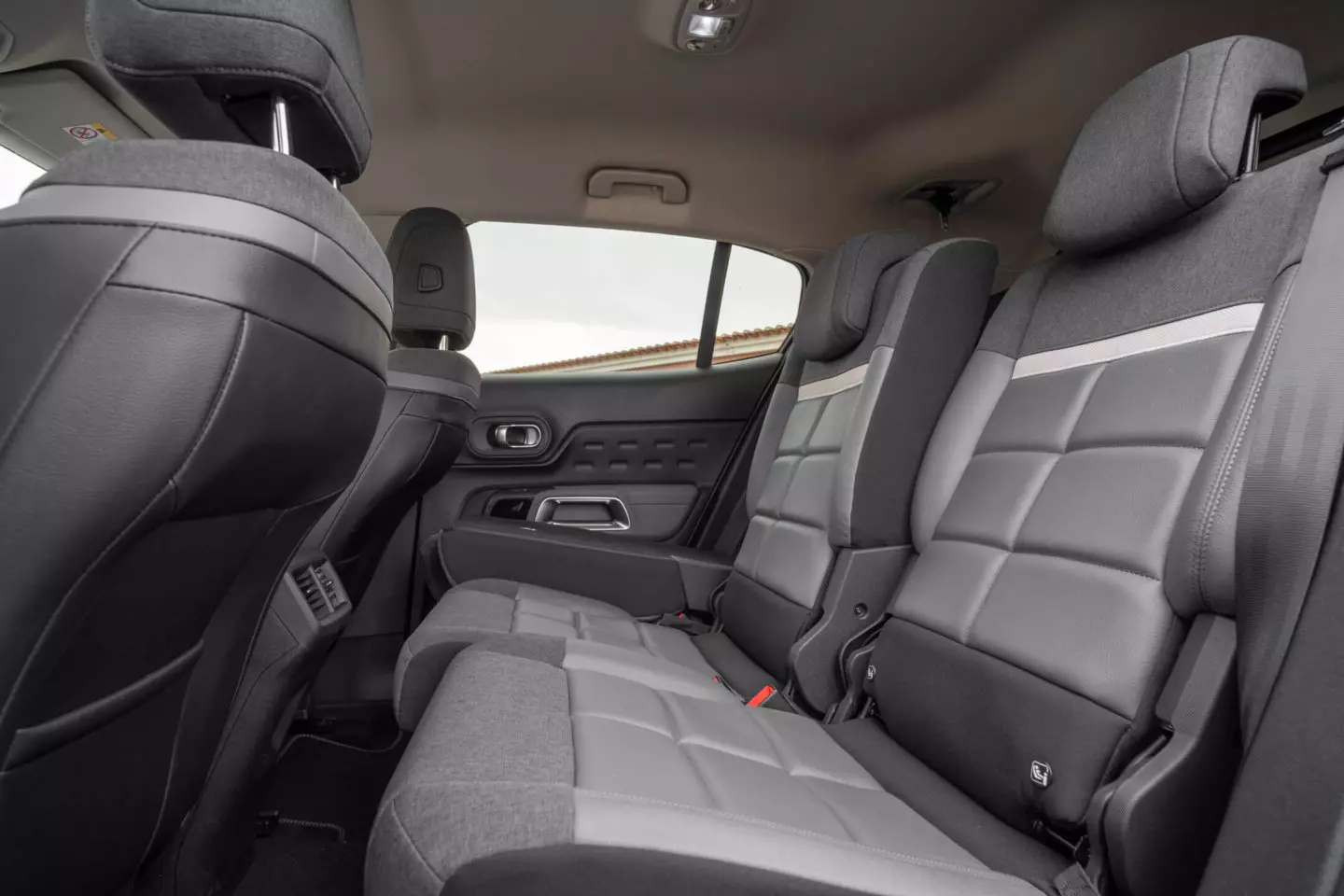
Flexibility is not lacking in the back… Seats slide, backs recline and fold.
Is the car right for me?
It's a difficult question to answer, due to the specificity of this version. If the C5 Aircross Hybrid effectively fulfills its role as a family vehicle — the MPV genes contribute a lot to that —, on the other hand, the plug-in hybrid engine doesn't suit everyone's needs, as it only really makes sense to choose this one when charging battery often (inviting even more urban use).
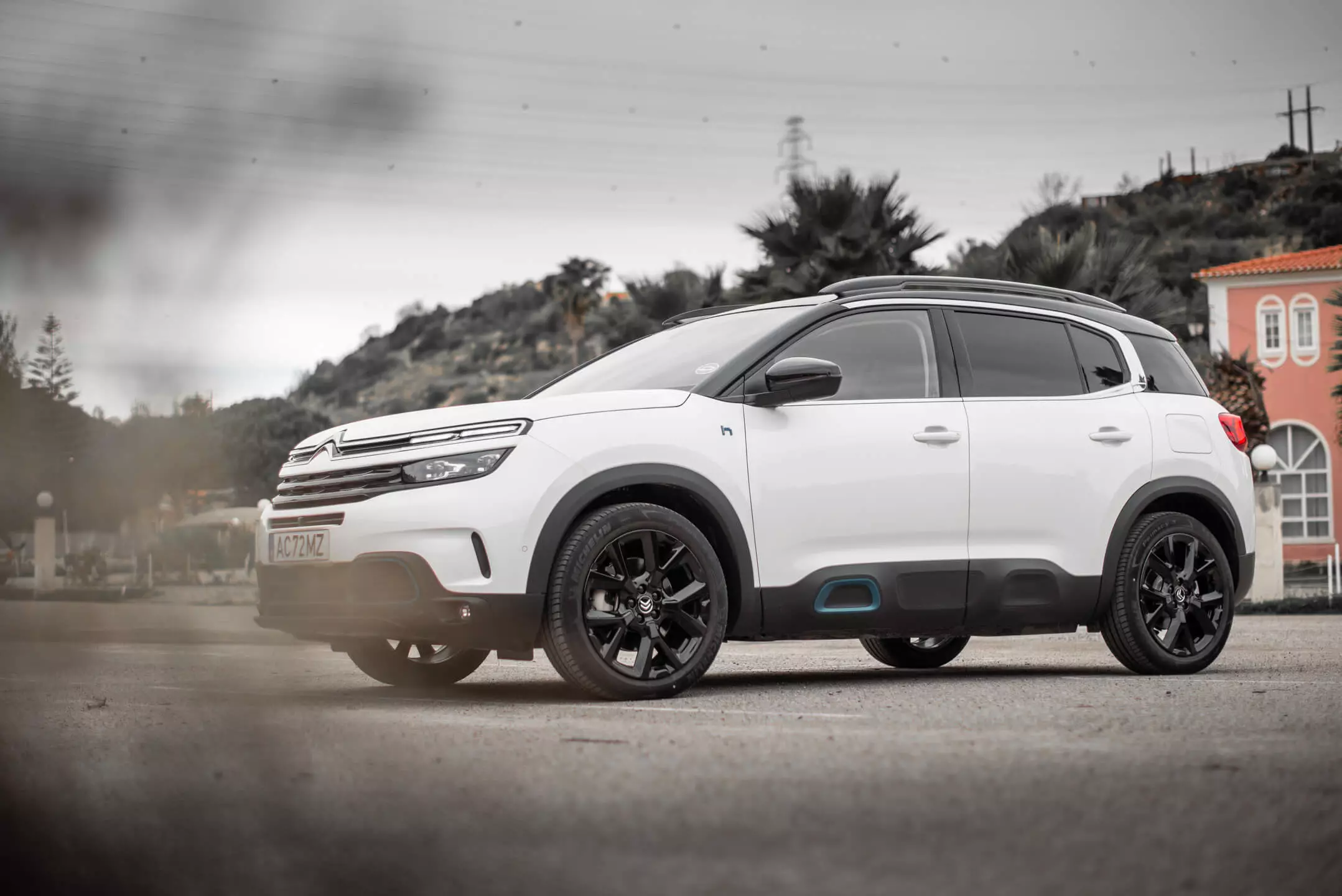
Furthermore, it has the burden of coming with two engines (combustion and electric) which pushes the price of this model to values above 46 thousand euros — more than 48 thousand euros in the case of our unit when we add the cost of the options. It will make more sense for a company to enjoy the tax benefits that (still) exist for this type of vehicle.
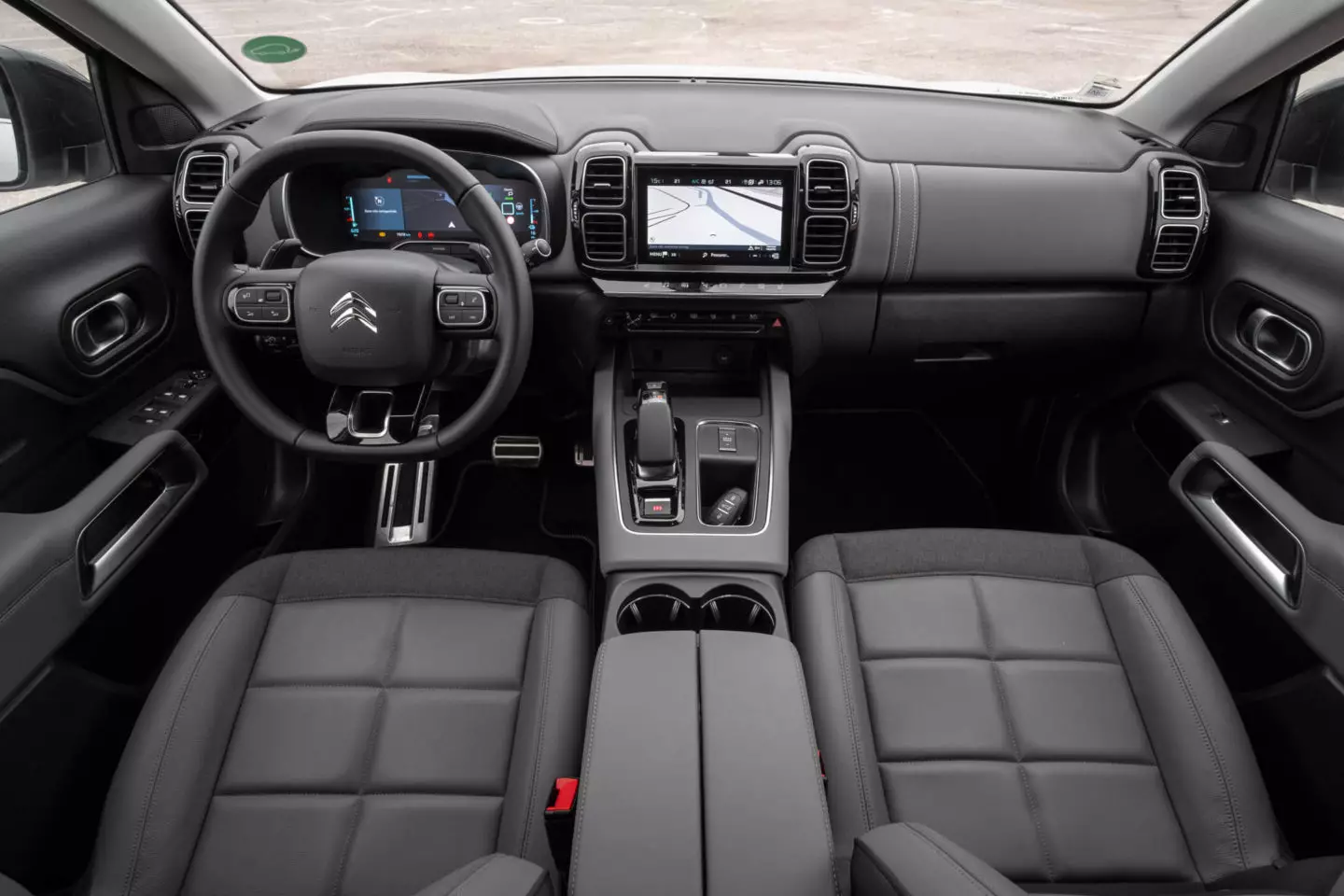
Friendly and pleasant presentation, although it would be favored with the presence of some color. The difference to other C5 Aircross lies in a shortcut button for infotainment that gives access to pages dedicated to the hybrid system.
As for individuals, there are more affordable options in the C5 Aircross range, although the only one that offers performances of the same caliber is the pure petrol 1.6 PureTech 180 hp with EAT8 box which, despite being more affordable for around 7000 euros ( more thing less thing), will always use much more fuel.
